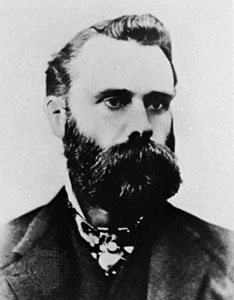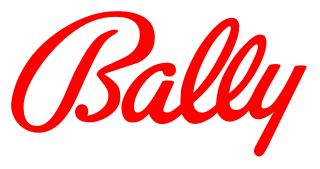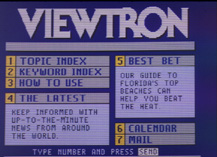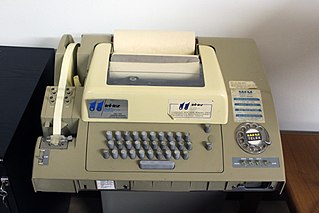Related Research Articles

Dow Jones & Company, Inc. is an American publishing firm owned by News Corp and led by CEO Almar Latour.

CompuServe was an American online service, the first major commercial one in the world. It opened in 1969 as a timesharing and remote access service marketed to corporations. After a successful 1979 venture selling otherwise under-utilized after-hours time to Radio Shack customers, the system was opened to the public, roughly the same time as The Source. H&R Block bought the company in 1980 and began to more aggressively advertise the service.

Videotex was one of the earliest implementations of an end-user information system. From the late 1970s to early 2010s, it was used to deliver information to a user in computer-like format, typically to be displayed on a television or a dumb terminal.

Video on demand (VOD) is a media distribution system that allows users to access videos, television shows and films without a traditional video playback device and a typical static broadcasting schedule. In the 20th century, broadcasting in the form of over-the-air programming was the most common form of media distribution. As Internet and IPTV technologies continued to develop in the 1990s, consumers began to gravitate towards non-traditional modes of content consumption, which culminated in the arrival of VOD on televisions and personal computers.

Charles Henry Dow was an American journalist who co-founded Dow Jones & Company with Edward Jones and Charles Bergstresser.

The Minitel was a videotex online service accessible through telephone lines, and was the world's most successful online service prior to the World Wide Web. It was invented in Cesson-Sévigné, near Rennes, Brittany, France.

Prodigy Communications Corporation was an online service from 1984 to 2001 that offered its subscribers access to a broad range of networked services. It was one of the major internet service providers of the 1990s.

The Bloomberg Terminal is a computer software system provided by the financial data vendor Bloomberg L.P. that enables professionals in the financial service sector and other industries to access Bloomberg Professional Services through which users can monitor and analyze real-time financial market data and place trades on the electronic trading platform. It was developed by employees working for businessman Michael Bloomberg. The system also provides news, price quotes, and messaging across its proprietary secure network. It is well known among the financial community for its black interface, which has become a recognizable trait of the service. The first version of the terminal was released in December 1982.

Gateway, Inc., previously Gateway 2000, Inc., was an American computer company originally based in Iowa and South Dakota. Founded by Ted Waitt and Mike Hammond in 1985, the company developed, manufactured, supported, and marketed a wide range of personal computers, computer monitors, servers, and computer accessories. At its peak in the year 2000, the company employed nearly 25,000 worldwide. Following a seven-year-long slump, punctuated by the acquisition of rival computer manufacturer eMachines in 2004 and massive consolidation of the company's various divisions in an attempt to curb losses and regain market share, Gateway was acquired by Taiwanese hardware and electronics corporation Acer, in October 2007 for US$710 million.

Bally Technologies, Inc. is an American manufacturer of slot machines and other gambling technology based in Enterprise, Nevada. It is owned by Light & Wonder.

Prestel, the brand name for the UK Post Office Telecommunications's Viewdata technology, was an interactive videotex system developed during the late 1970s and commercially launched in 1979. It achieved a maximum of 90,000 subscribers in the UK and was eventually sold by BT in 1994.

AST Research, Inc., later doing business as AST Computer, was a personal computer manufacturer. It was founded in 1980 in Irvine, California, by Albert Wong, Safi Qureshey, and Thomas Yuen, as an initialism of their first names. In the 1980s, AST designed add-on expansion cards, and evolved toward the 1990s into a major personal computer manufacturer. AST was acquired by Samsung Electronics in 1997 but was de facto closed in 1999 due to a series of losses.

Micronet 800 was an information provider (IP) on Prestel, aimed at the 1980s personal computer market. It was an online magazine that gave subscribers computer related news, reviews, general subject articles and downloadable telesoftware.
Factiva is a business information and research tool owned by Dow Jones & Company. Factiva aggregates content from both licensed and free sources. Providing organizations with search, alerting, dissemination, and other information management capabilities. Factiva products claim to provide access to more than 32,000 sources such as newspapers, journals, magazines, television and radio transcripts, photos, etc. These are sourced from nearly every country in the world in 28 languages, including more than 600 continuously updated newswires.

Louis Gordon Crovitz is an American media executive and advisor to media and technology companies. He is a former publisher of The Wall Street Journal who also served as executive vice-president of Dow Jones and launched the company's Consumer Media Group, which under his leadership integrated the global print, online, digital, TV and other editions of The Wall Street Journal, MarketWatch.com and Barron's across news, advertising, marketing and other functions. He stepped down from those positions in December 2007, when News Corp. completed its acquisition of Dow Jones. He writes a weekly column in The Wall Street Journal, titled "Information Age."

Viewtron was an online service offered by Knight-Ridder and AT&T from 1983 to 1986. Patterned after the British Post Office's Prestel system, it started as a videotex service requiring users to have a special terminal, the AT&T Sceptre. As home computers became important in the marketplace, the development focus shifted to IBM, Apple, Commodore and other personal computers.

Telex is a telecommunication service that provides text-based message exchange over the circuits of the public switched telephone network or by private lines. The technology operates on switched station-to-station basis with teleprinter devices at the receiving and sending locations. Telex was a major method of sending written messages electronically between businesses in the post–World War II period. Its usage went into decline as the fax machine grew in popularity in the 1980s.
NewsRx is a media and technology company focusing on digital media, printed media, news services, and knowledge discovery through its BUTTER platform. In 1995 the company was the world's largest producer of health news. The company publishes 194 news weeklies in health and other fields, which are distributed to subscribers and partners including Factiva, the Wall Street Journal Professional Edition, Thomson Reuters, ProQuest, and Cengage Learning. C W Henderson founded the company in 1984 and its first publication was AIDS Weekly. In the early 2000s, the firm added the imprint, VerticalNews to publish news weeklies in non-health fields. Now based in Atlanta, Georgia, the company reports through its daily news service and publishes reference books through its partner, ScholarlyEditions. NewsRx launched its BUTTER platform in 2015, which is a knowledge discovery engine that delivers its content to academics, researchers, and professionals.
Amazon S3 Glacier is an online file storage web service that provides storage for data archiving and backup.
Newsbytes News Network, called "an Associated Press for tech-information junkies" was founded in May, 1983 in San Francisco, California by broadcast journalist Wendy Woods Gorski, who remained editor in chief for the 19 years. Continually published from 1983 to 2002, Newsbytes covered breaking news in consumer technology including computing, interactive media, telecommunications and cybersecurity, spanning the formative years of Silicon Valley and the advent of personal computers.
References
- ↑ Review: Dow Jones News/Retrieval, InfoWorld , April 30, 1984
- 1 2 James C. Condon, Investing: Using Computers to Play the Market, The New York Times, March 23, 1986.
- ↑ Stop the Presses, InfoWorld , March 30, 1981
- ↑ Beth Krevitt-Eres et al, for UNESCO (1986), A decision-makers' guide to videotex and teletext, p. 56
- ↑ Times News Service on Line, The New York Times, December 7, 1993.
- ↑ Dow Jones and West to Link Data Services, The New York Times, May 18, 1994.
- ↑ The Executive Computer: Headlines and Stock Quotes on Call, The New York Times, November 1, 1987
- ↑ Factiva Completes Upgrade of Customers To New Factiva Products, EContent , July 8, 2003